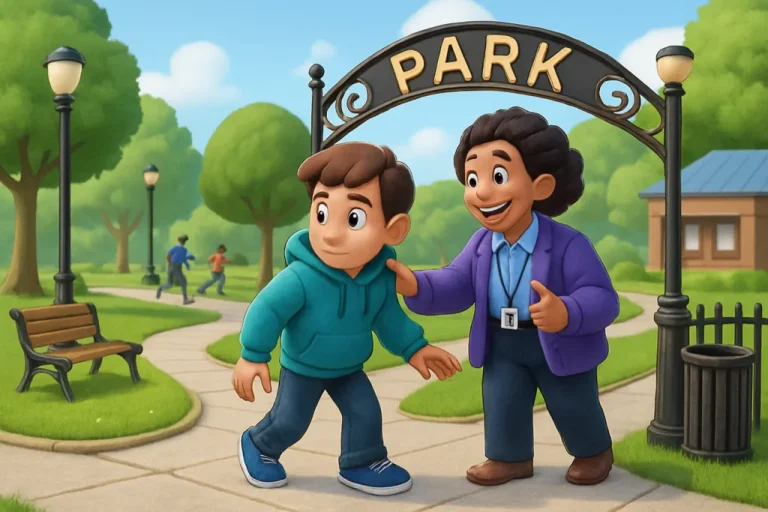Defining Quiet BPD
Quiet BPD, also known as “high-functioning” BPD, is a non-official subtype of borderline personality disorder characterised by internalised emotional challenges. Individuals with quiet BPD may appear composed externally but experience intense emotional challenges internally. This subtype is often misunderstood, making it essential to learn more and understand all of its intricacies and symptoms in order to provide better support and gain the ability to embrace these unique challenges for people with this mental health condition.
Recognising Quiet BPD in Relationships
Identifying quiet BPD within a relationship can be challenging due to its subtle nature. Partners may notice persistent feelings of emptiness, fear of abandonment, and a tendency to avoid conflict or express emotions. People with quiet BPD may be highly sensitive to perceived rejection or criticism from their partner, even if it’s unintentional. They may interpret neutral remarks or actions as evidence of abandonment, leading to feelings of hurt or anger.
Trust issues are common in individuals with borderline personality disorder, including those with the quiet subtype. They may have a hard time trusting their partner’s intentions or believing in the stability of the relationship, leading to increased anxiety and insecurity. Despite their desire for connection, individuals with quiet BPD may find it difficult to maintain stable and fulfilling relationships. However, it’s essential to approach these signs with empathy and understanding. Encouraging open communication can help strengthen your relationship and form deeper, meaningful connections.
BPD Relationship Cycle
The Borderline Personality Disorder (BPD) relationship cycle is characterised by a series of emotional highs and lows that can create a challenging experience for both partners. This cycle often reflects the intense emotional experiences and fears of abandonment that people with BPD may face.
Navigating a relationship with someone diagnosed with BPD requires understanding and patience. Both partners, friends and family members need to communicate openly and seek support, whether through therapy or support groups, to effectively manage the emotional ups and downs. Understanding the nature of the BPD relationship cycle can help partners cope with the challenges and foster a healthier dynamic.
Idealisation Phase
The idealisation phase is a critical part of the relationship cycle for individuals with Borderline Personality Disorder (BPD). This phase is often marked by intense emotions and a deep sense of connection, but it can also set the stage for future challenges. Some of the characteristics of this phase include:
- Intense Admiration
- Rapid Progression
- Emotional Highs
- Fear of Rejection
- Defense Mechanism
While the idealisation phase can feel challenging, it is essential to recognise that the devaluation phase often follows it. As the relationship evolves, the intense emotions may change, leading to disappointment or anger when the partner inevitably shows flaws or fails to meet the idealised expectations.
Devaluation Phase
Following the intense emotional highs of the idealisation phase, this stage marks a shift in perception and emotional experience. During devaluation, the person with BPD begins to perceive their partner in a negative light, attributing exaggeratedly negative qualities to them.
As a defence mechanism, the person may engage in splitting, a psychological process where they view people as either all good or all bad. This black-and-white thinking can lead to a complete reversal of feelings, where the partner who was once idealised is now seen as entirely unworthy of love.
Ultimately, the devaluation phase highlights the complexities of relationships involving people with BPD. It underscores the importance of communication, empathy, and understanding in navigating these emotional challenges. Both partners may benefit from seeking professional support to help manage the emotional ups and downs and foster healthier relationships.
Separation Phase
The separation phase in relationships between people with Borderline Personality Disorder (BPD) is a complex and often challenging period that typically follows the devaluation phase. This phase is characterised by an enhanced sense of emotional distress and a need for autonomy, both for the person with BPD and their partner.
The push-pull dynamic can create significant confusion and frustration for both partners. The person may express a desire for independence or space yet simultaneously fear that this distance will lead to abandonment. This internal conflict can manifest in various ways, including withdrawal, emotional outbursts, or even impulsive and self-destructive behaviors.
For the person with BPD, the separation may provide an opportunity to confront their fears and insecurities. It can be a time to explore their identity outside of the relationship, which is essential for personal development. However, this process can be challenging, as the person may feel lonely and self-doubt during the separation. Open communication and setting healthy boundaries can help both partners manage this phase more effectively.
Impact on Relationships
The quiet BPD impact on relationships can be noticed in a variety of ways, often presenting unique challenges that may not be immediately noticeable. One of the most profound effects is the intense fear of abandonment. Individuals with quiet BPD may harbour their fears of rejection or abandonment, leading them to constantly seek reassurance and validation from their partner. However, instead of expressing these fears, they may withdraw emotionally or become distant, making it difficult for their partner to understand their inner challenges.
Another significant impact is the instability of their sense of self. People with quiet BPD may have a fluctuating sense of identity, making it challenging for them to maintain a consistent sense of who they are within the relationship. This instability can manifest in various ways, such as changing their interests, values, or even personality traits to align with their partner’s preferences. As a result, their partner may find it difficult to understand their true self, leading to confusion within the relationship.

Moreover, individuals with quiet BPD often grapple with chronic feelings of emptiness or dissatisfaction, even in seemingly fulfilling relationships. The impact of quiet BPD on relationships is profound and multifaceted. It can lead to difficulties in communication, emotional instability, and challenges in maintaining intimacy and trust. However, with patience, empathy, and professional support, individuals with quiet BPD and their partners can work together to navigate these challenges and build a healthier, more fulfilling relationship.
Challenges in Communication and Emotional Expression
Communication and emotional expression pose significant challenges. Individuals with this subtype may find it difficult to articulate their feelings or needs, leading to misunderstandings and unmet expectations. Furthermore, the fear of vulnerability may inhibit open dialogue, hindering the development of intimacy and trust.
Fear of Abandonment
The fear of abandonment is one of the biggest challenges in quiet BPD, driving behaviours aimed at maintaining closeness and security within the relationship. Individuals may engage in various activities to avoid rejection, such as excessive reassurance-seeking or withdrawal. Understanding and addressing this fear is crucial for fostering a healthy, secure attachment.
Emotional Turmoil
Beneath the calm exterior lies a whirlwind of emotional turmoil for individuals with quiet BPD. Intense mood swings, chronic feelings of emptiness, poor self-image, and a persistent sense of instability characterise their inner experience. This emotional volatility can spill over into the relationship, impacting both partners and contributing to relational challenges.
How Does Someone with BPD Act in a Relationship?
In a relationship, someone with quiet BPD may exhibit a pattern of self-destructive behaviours shaped by their internal challenges. They may oscillate between intense closeness and emotional distance, difficulties regulating intense emotions, and fear of abandonment. Recognising these patterns and offering support and understanding can foster a more compassionate and resilient relationship dynamic.
Moreover, individuals with BPD may engage in black-and-white thinking, viewing relationships in terms of extremes—idealisation and devaluation. During the idealisation phase, they may idolise their partner, seeing them as perfect and infallible. However, this idealisation is often short-lived, and they may quickly shift to devaluation, perceiving their partner as flawed or unworthy of their love. This cycle of idealisation and devaluation can create instability and insecurity within the relationship, as their partner may feel uncertain about where they stand.
Despite these challenges, it’s important to recognise that individuals with BPD are capable of forming meaningful and fulfilling relationships with proper support and treatment. Therapy, medication, and healthy coping mechanisms can help them manage their quiet BPD symptoms and develop healthier patterns of relating to others.
Supporting a Partner with Quiet BPD
Supporting a partner with quiet BPD requires empathy, patience, and a willingness to navigate challenges together. By fostering an environment of open communication and understanding, partners can cultivate a stronger bond and weather the storms that come with quiet BPD.
Encouraging Open Communication
Open communication is paramount in relationships impacted by quiet BPD. Encouraging your partner to express their emotions and concerns openly, without fear of judgment, creates a safe space for vulnerability and connection. Active listening and validation can strengthen trust and foster mutual understanding.
Living with quiet BPD can be isolating and lonely, but open communication creates a supportive environment where individuals feel understood, accepted, and valued by their partner. This sense of connection and belonging can have a profound positive impact on their mental health and well-being.
Collaborative Approaches to Managing Relationship Difficulties
Collaborative problem-solving is essential for managing relationship difficulties associated with quiet BPD. By working together to identify triggers, develop coping strategies, and set boundaries, partners can navigate challenges more effectively and strengthen their bond in the process. Additionally, working together to form close relationships and providing emotional support to improve symptoms of emotional dysregulation is essential in managing the challenges of this mental health disorder.
Seeking Professional Help and Treatment
Seeking professional help and treatment is a vital step in managing personality disorders and their impact on relationships. Psychotherapy delivered by a mental health professional, particularly dialectical behavioural therapy (DBT), is often considered the gold standard for treating borderline personality disorder. DBT focuses on teaching skills to manage emotions, improve interpersonal relationships, and cope with distressing situations. Therapists may also use other methods, such as cognitive-behavioural therapy (CBT) or schema therapy, tailored to the individual’s specific needs and preferences.


In addition to therapy, individuals with mental health disorders may benefit from skills training programs that teach practical strategies for managing emotions, improving communication, and building healthier relationships. These programs often complement traditional therapy and provide opportunities for ongoing support and practice through the help and support of mental health professionals.
Encouraging your partner to seek therapy and offering you support throughout their treatment journey can be transformative for both partners.
Get Support with Unique Community Services
At Unique Community Services (UCS), we specialise in supporting individuals with complex care needs, including quiet BPD. Our comprehensive approach includes therapy, support and educational resources designed to empower individuals and strengthen relationships. With locations conveniently located in Manchester and Leeds, we’re here to support you on your journey towards healing and growth.
Contact us today to learn more about our services and take the first step towards a brighter future.




